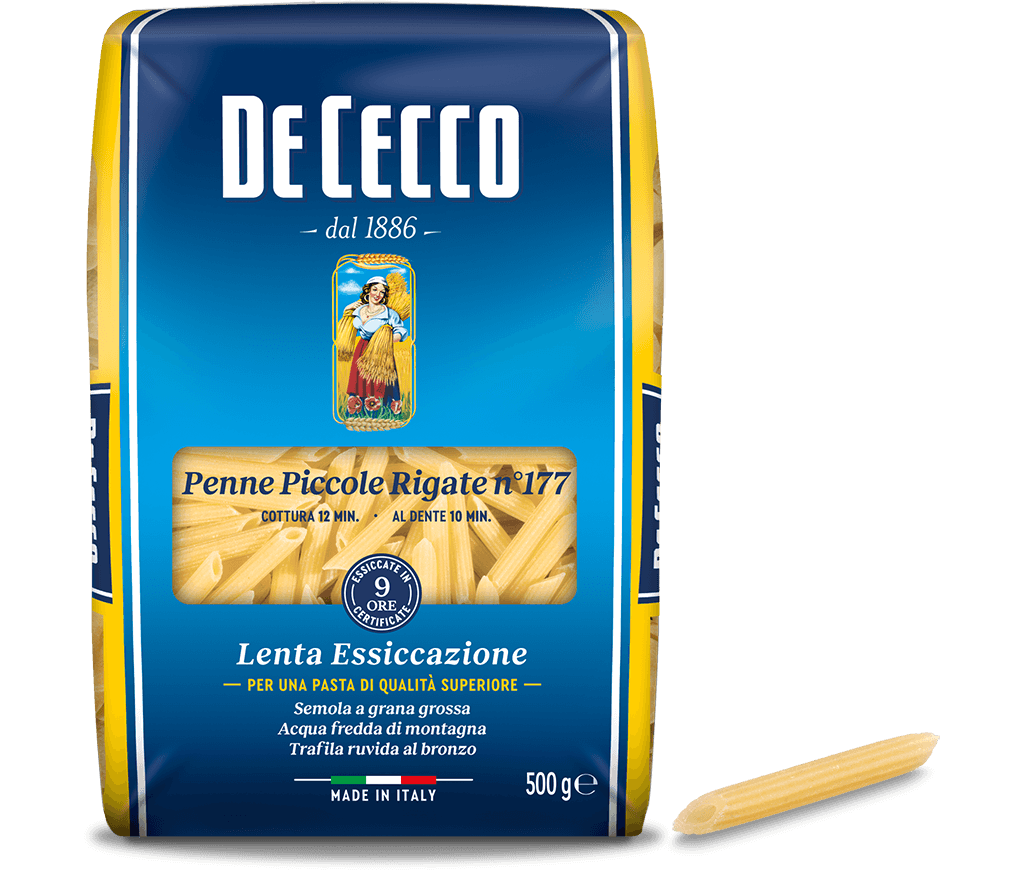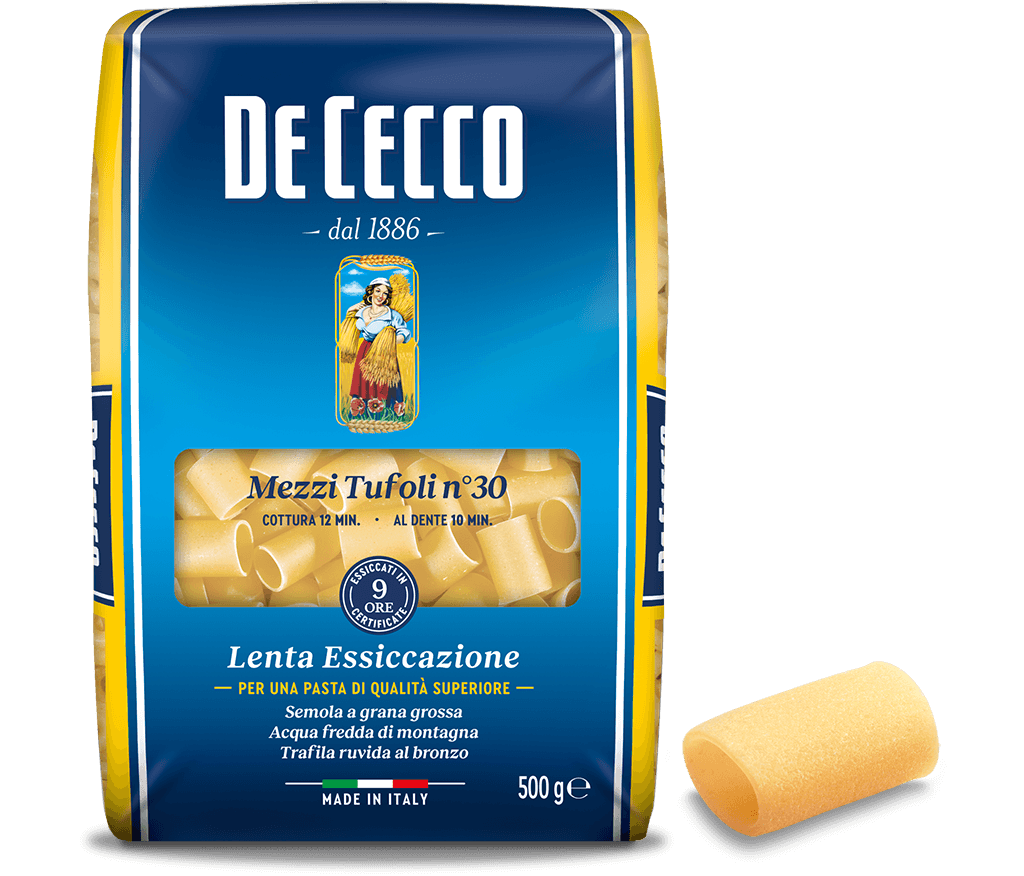Mezzi Tufoli n° 30
Mezzi Tufoli are a shorter version of the classic Tufoli and are part of the short, straight cut, smooth pasta family.
It is not certain where this type of pasta originates from and there are lots of local variations on the name for it: Maniche (sleeves), Gigantoni (giants), Occhi di elefante (elephant's eyes), Elefante (elephant), Canneroni grandi (big canneroni), and Occhi di bove (bull's eye).
The lack of ridges is compensated for by a surprising softness which makes it exceptionally delicate on the palate. It is a delicate and sophisticated pasta which brings out the best in aromas, flavours and fragrance.
The condiments recommended for Mezzi Tufoli are meat ragù, but also sauces made from vegetables with mushrooms, artichokes and aubergines. This pasta also goes very well with sauces made from pulses such as beans, peas, chickpeas, broad beans and lentils.
Available in 500g pack.s
- Cooking time: 12 min - Al dente: 10 min
Our method
Attention, care, experience, quality at every stage: from our mill to your table.
Fedelini n° 10






